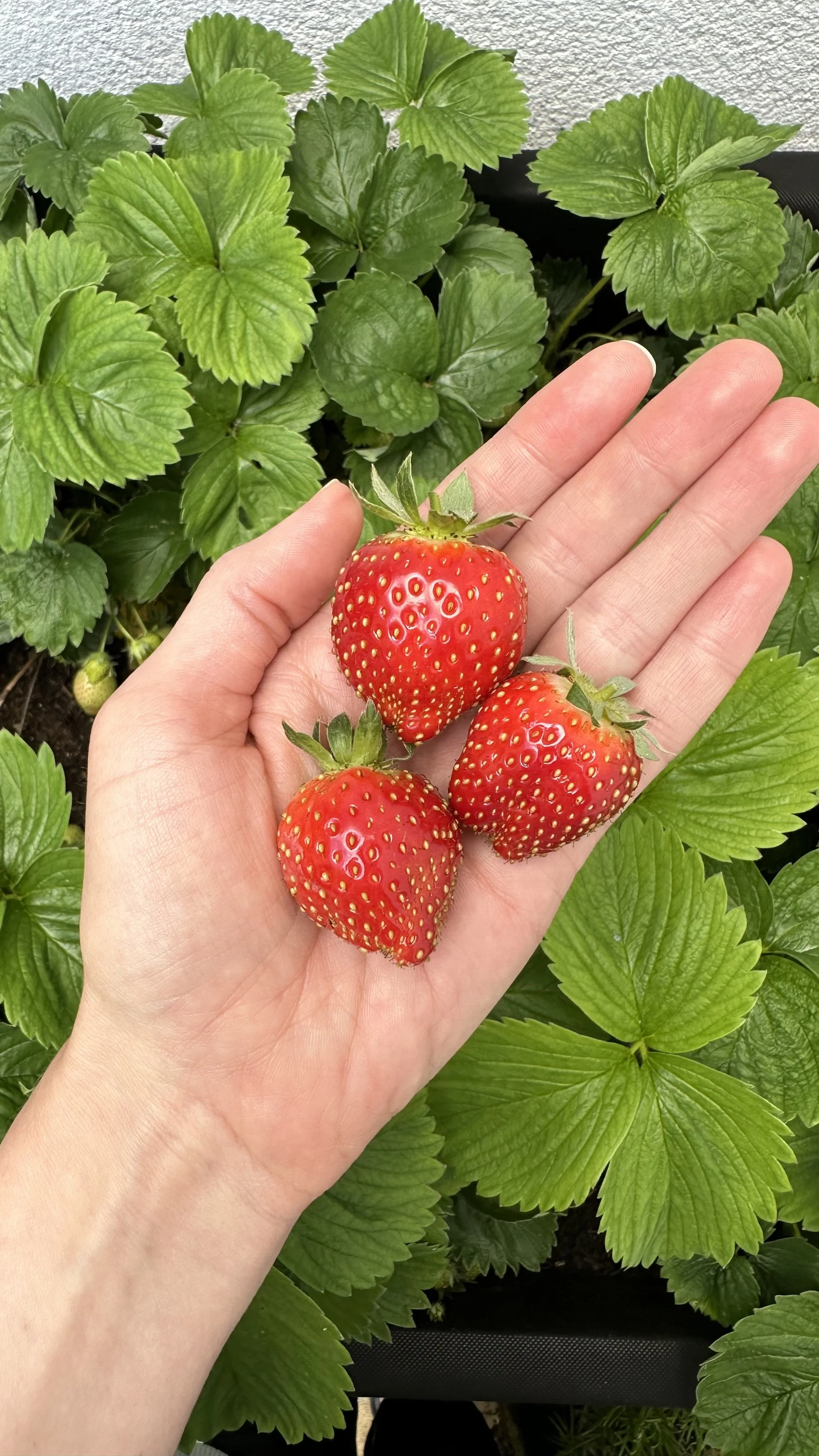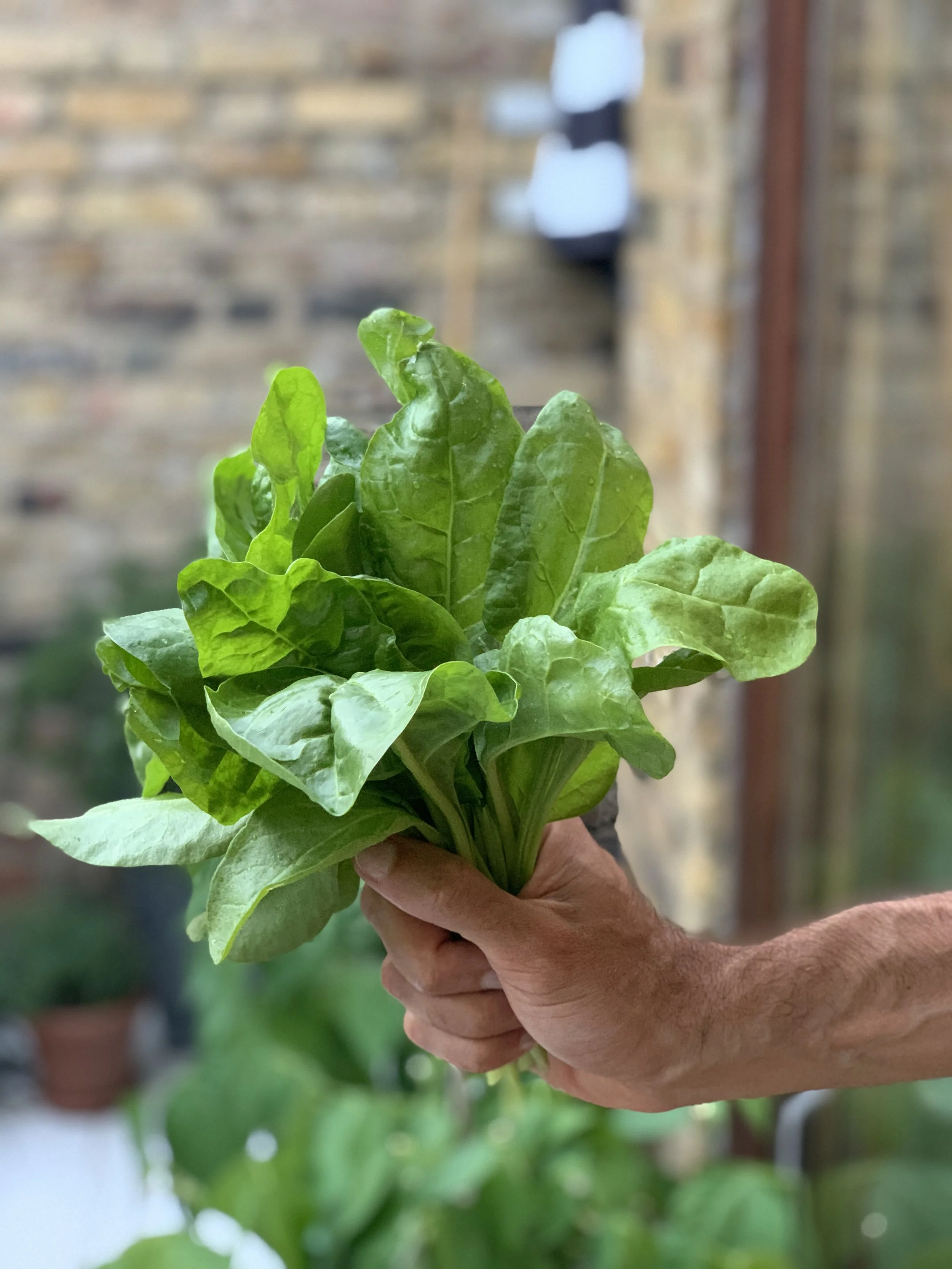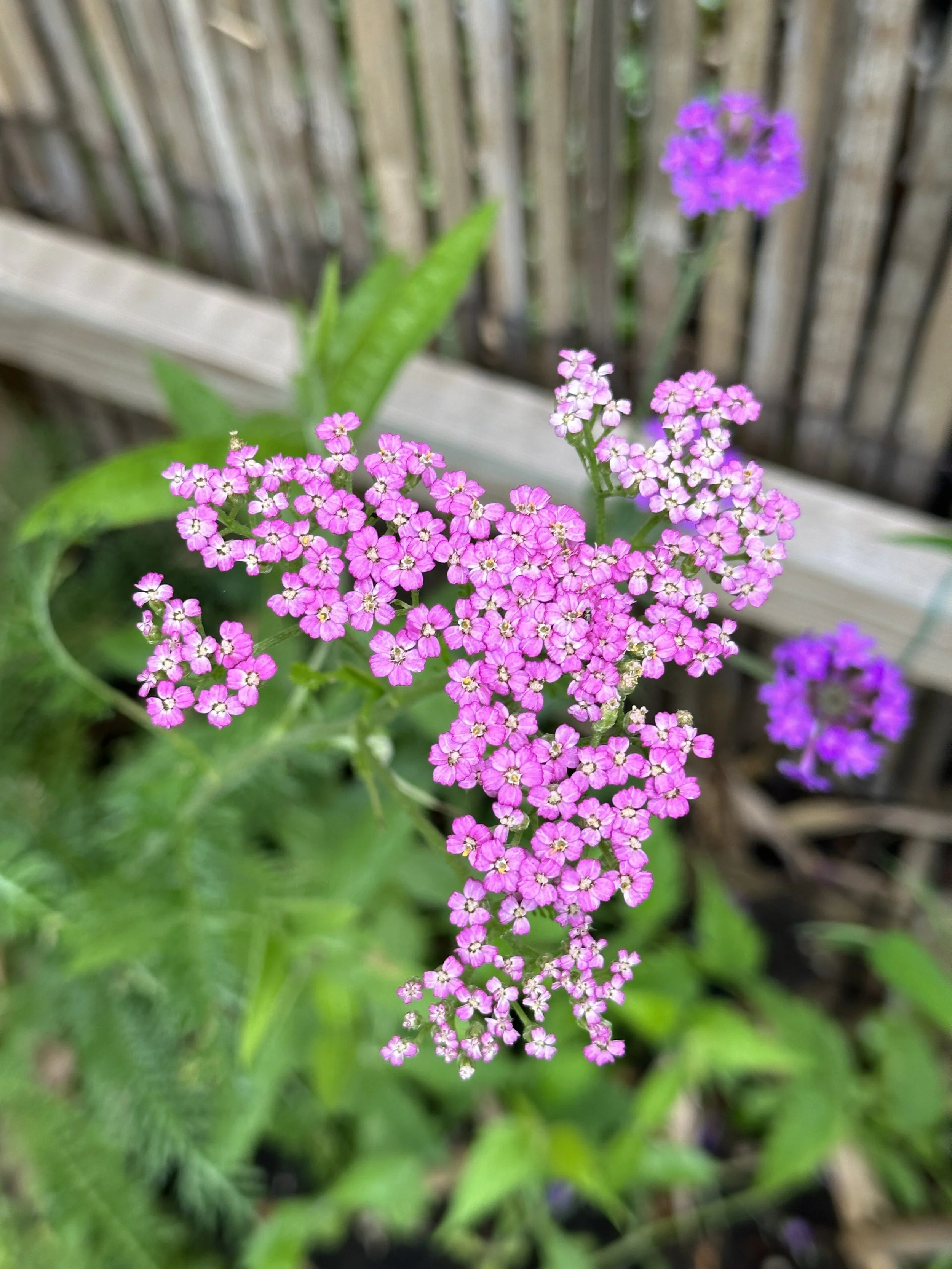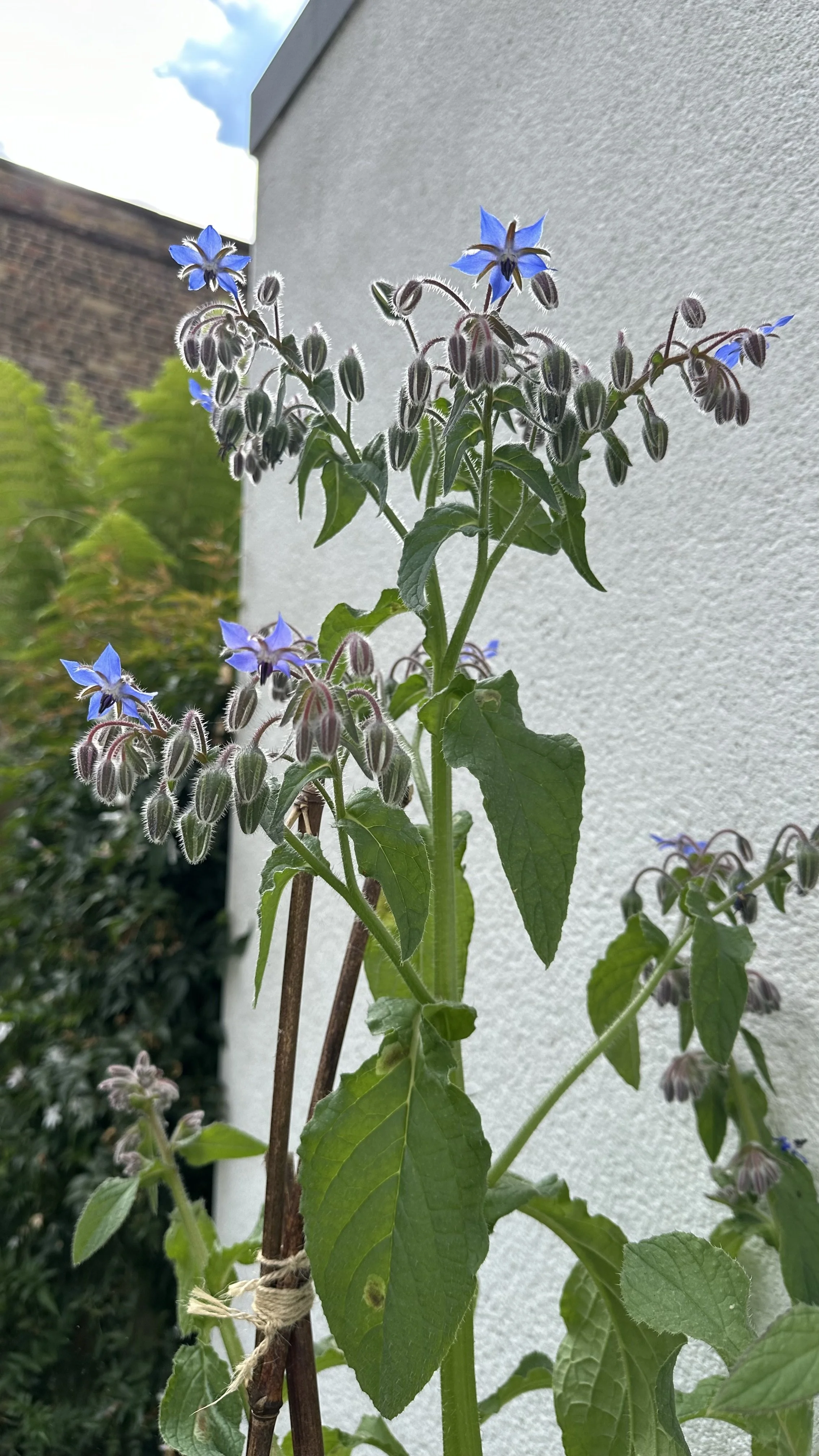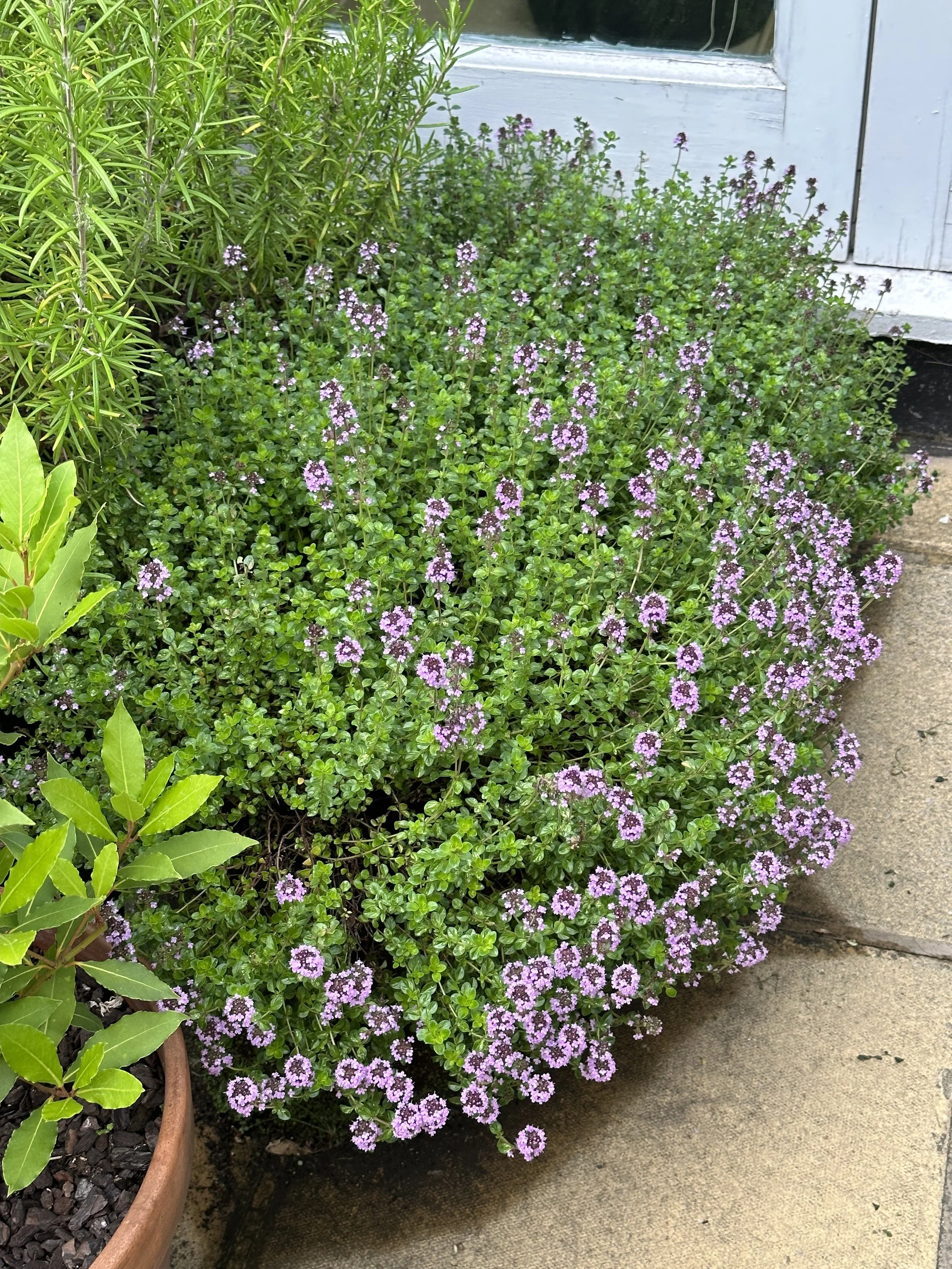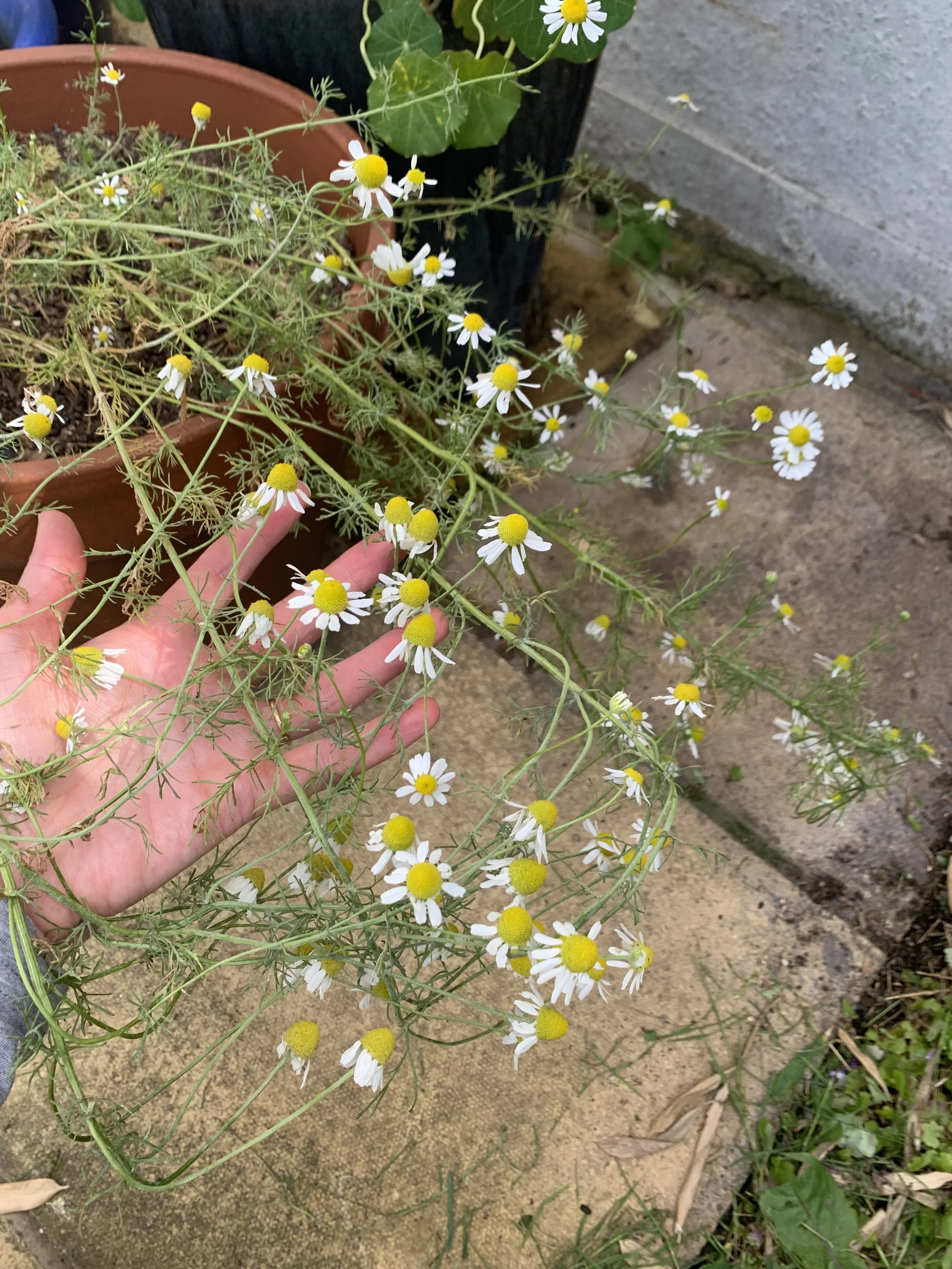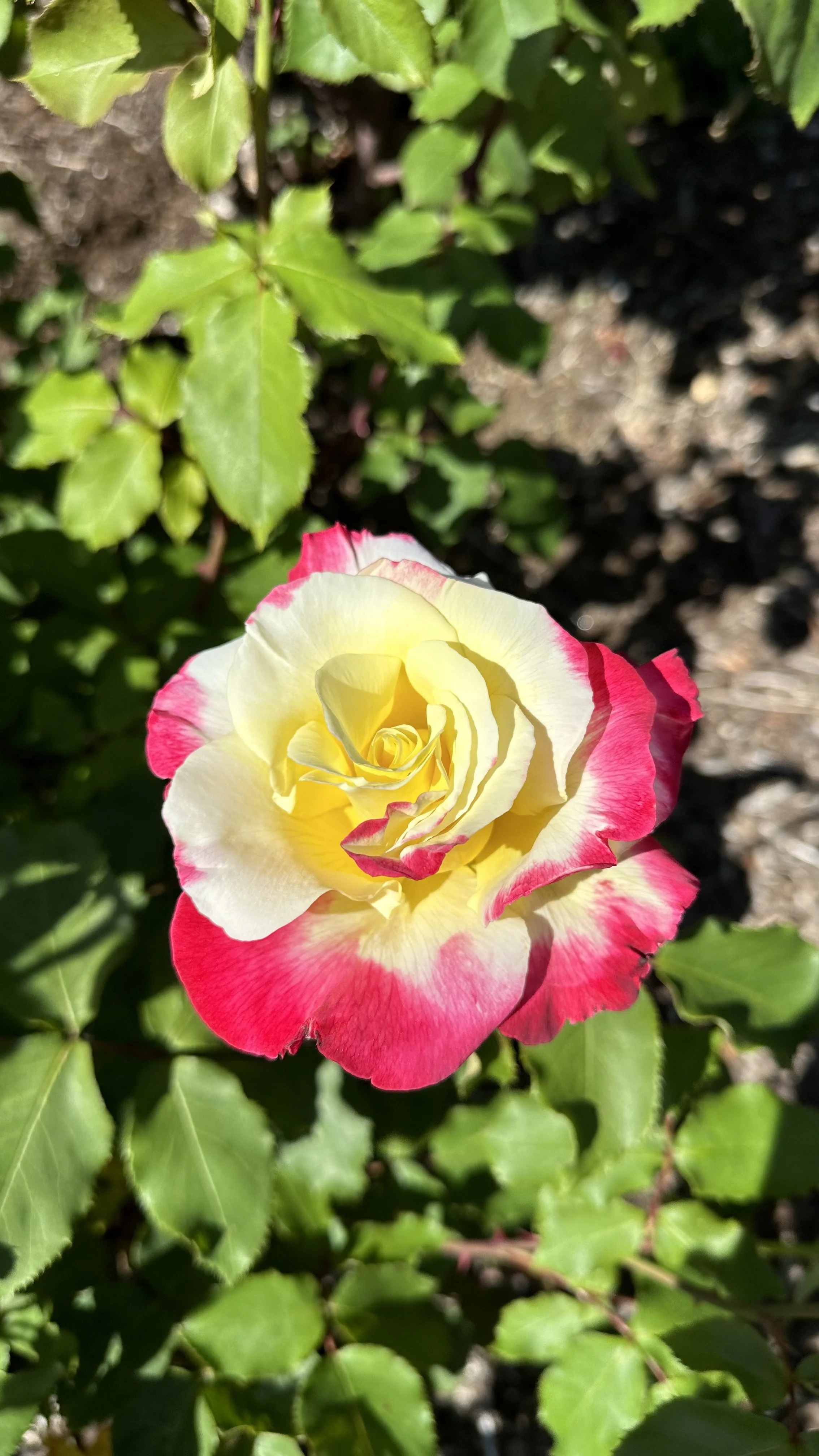Top Companion Plants for Growing Juicy, Sweet Strawberries
This article has links to products that I may make commission from.
Growing strawberries is a fun and rewarding experience and one of the first things I learned to grow at home.
In order to get the most out of your strawberry patch, it is best to consider the benefits of companion planting.
Companion planting is an essential aspect of organic gardening, and growing strawberries is no exception.
By planting certain plants alongside your strawberries, you can create a more sustainable and thriving garden, while also reducing the need for harmful pesticides.
Here we'll explore the best strawberry companion plants that can help attract beneficial insects, control pests, and improve soil health.
To learn more about growing strawberries, check out my guide:
How to Plant a Strawberry Patch That Continually Produces Fruit
Fun Fact:
Did you know that strawberries are not actually berries, in the botanical sense?
Botanically speaking, a berry is a fruit that develops from a single flower and has multiple seeds embedded in the flesh.
However, strawberries are technically a type of "aggregate fruit," which means that they are made up of many small, seed-like "achenes" that are embedded in a fleshy receptacle. The more you know.
Do Strawberries Need Companion Plants?
Strawberries don't necessarily need companion plants to grow and produce fruit.
However, planting certain companion plants alongside your strawberries can provide a number of benefits, such as repelling pests, attracting beneficial insects like bees and butterflies, improving soil health, and increasing yield.
Companion planting with strawberries can also help you to garden more sustainably and organically, by reducing the need for synthetic fertilizers and pesticides.
So while strawberries can certainly be grown without companion plants, planting complementary crops can help to create a more diverse and resilient garden ecosystem.
Best Strawberry Companion Plants
First, it's important to note that strawberries thrive in raised garden beds, as they provide the ideal growing conditions for these plants.
When planting alongside strawberries, there are many options for strawberry companion plants.
Here we will cover what to plant with strawberries to keep bugs away and what to plant with strawberries in raised beds.
Bush Beans
Bush beans are an excellent companion plant for strawberries for several reasons:
Nitrogen fixation:
Bush beans belong to a group of plants called legumes that have the ability to fix nitrogen in the soil.
Nitrogen is an essential nutrient that plants need to grow, and strawberries are known to be heavy feeders.
By planting bush beans alongside strawberries, you can help increase the nitrogen levels in the soil, which will benefit the strawberries.
Soil improvement:
Bush beans have deep roots that help break up compacted soil, allowing air and water to penetrate the soil more easily.
This improved soil structure can benefit the strawberry plants, as they can access water and nutrients more easily.
Pest control:
Bush beans can also help deter pests that commonly attack strawberry plants.
For example, bean beetles prefer to feed on beans rather than strawberries, so planting beans alongside strawberries can help draw them away from the strawberries.
Space utilization:
Finally, bush beans can help utilize space in the garden effectively.
They have a compact growth habit and don't take up much space, so they can be planted in between rows of strawberries, maximizing the use of available space.
This can be especially useful in smaller gardens or raised garden beds.
Overall, planting bush beans alongside strawberries is an excellent strategy for improving soil health, deterring pests, and maximizing space in the garden.
Here are the beans I recommend growing:
Want to learn more about companion planting? Check out my guides:
The Best Spinach Companion Plants
Spinach
Spinach is a great companion planting for strawberries for several reasons:
Weed suppression:
Spinach is a great living mulch, which means it can help suppress weeds by covering the soil and reducing the amount of light that reaches weed seeds.
This is particularly beneficial for strawberries, which have shallow roots and can be easily outcompeted by weeds.
Moisture retention:
Spinach can help retain moisture in the soil, which is particularly useful during hot summer months when strawberries may require extra watering.
The living mulch of spinach can help prevent water from evaporating from the soil, keeping it moist for longer.
Space utilization:
Like bush beans, spinach has a compact growth habit and doesn't take up much space, making it an ideal companion plant for strawberries in smaller gardens or raised garden beds.
Here is the spinach I recommend planting:
For more companion planting inspiration, check out my guides:
Blueberry Companion Plants: The Best and Worst
Yarrow
Yarrow is an excellent companion plant for strawberries.
Yarrow is a herbaceous perennial that produces clusters of small, daisy-like flowers that are attractive to a variety of beneficial insects, including ladybugs, lacewings, and hoverflies.
These insects can help to pollinate your strawberry plants and also prey on common garden pests such as aphids and spider mites.
Check out my full guide to companion planting yarrow.
In addition to its insect-attracting properties, yarrow is also known for its ability to improve soil health.
It has deep roots that can help to break up compacted soil and bring up nutrients from deeper layers.
Yarrow also contains natural compounds that can help to suppress certain soil-borne diseases.
Overall, planting yarrow alongside your strawberry plants can help to create a more diverse and resilient garden ecosystem, while also providing a beautiful display of flowers.
Here is the yarrow variety I recommend:
For more garden inspiration, check out my guides:
Living Mulch
Living mulch is another effective strawberry companion plant that helps improve soil health.
When planted alongside strawberries, living mulch plants such as clover, alfalfa, and hairy vetch help suppress weeds and retain moisture in the soil.
As a result, the strawberries can grow more robust and produce more significant yields.
What is living mulch?
Living mulch refers to a ground cover of living plants that is used in place of traditional, dead mulch materials like straw or wood chips.
The living plants in a living mulch system can provide many of the same benefits as traditional mulch, such as reducing soil erosion, retaining moisture, and suppressing weed growth.
However, living mulch has the added benefit of being a living organism, which means it can also contribute to soil fertility and provide habitat for beneficial insects.
Living mulch is a great companion plant for strawberries for several reasons:
Soil improvement:
Living mulch, like clover or vetch, can help improve soil health by adding organic matter to the soil and increasing soil fertility.
As living mulch plants grow, they help suppress weeds, reduce soil erosion, and improve water retention.
Pest control:
Living mulch plants can help control pests by providing habitat for beneficial insects like spiders, ground beetles, and parasitic wasps.
These insects can help control pest populations naturally, reducing the need for chemical pesticides.
Nutrient cycling:
Living mulch plants are known to have deep roots that can access nutrients deep within the soil profile, which they bring to the surface and make available to other plants.
Additionally, as living mulch plants decompose, they release nutrients back into the soil, providing a natural source of fertilizer for the strawberry plants.
Increased yields:
Studies have shown that living mulch can increase crop yields in strawberry plants.
This is likely due to the increased soil fertility and pest control benefits provided by the living mulch.
Check out my guide: The Best Alternatives to Traditional Mulch for Your Garden.
Garlic
Garlic is a great companion plant for strawberries for several reasons:
Disease prevention:
Garlic is also known for its antimicrobial properties, which can help prevent the development of fungal diseases in the soil.
By planting garlic alongside strawberries, you can help prevent diseases like root rot and powdery mildew from taking hold in your strawberry patch.
Soil improvement:
Garlic is a heavy feeder that requires a lot of nutrients to grow, so planting it alongside strawberries can help improve soil health and fertility.
Additionally, as garlic decomposes in the soil, it releases nutrients like nitrogen and phosphorus back into the soil, which can be used by the strawberry plants.
Here is the type of garlic I recommend growing:
Learn more about companion planting with my guide:
Strawberry Companion Herbs
Certain herbs make excellent strawberry companions as they attract beneficial insects that prey on garden pests.
For instance, borage, thyme, and chamomile are known to attract pollinators and beneficial insects such as ladybugs and hoverflies, which prey on pests such as aphids and caterpillars.
By attracting beneficial insects, you can reduce the need for harmful pesticides, creating a more sustainable garden.
Borage
Borage is an excellent companion planting with strawberries for several reasons:
Attracts beneficial insects:
Borage is a known attractor of beneficial insects, such as bees and predatory wasps, which can help pollinate strawberry plants and control pests.
The flowers of borage are rich in nectar and pollen, making them an attractive food source for bees and other pollinators.
Learn more: Borage Companion Planting: The Best Pairings.
Soil improvement:
Borage has a deep taproot that can help break up compacted soil, allowing air and water to penetrate more easily.
Additionally, the leaves of borage contain high levels of potassium and calcium, which can help improve soil fertility.
Here are the borage seeds I recommend:
Thyme
Thyme is a great plant for companion planting strawberries:
Soil improvement:
Thyme has a deep root system that can help break up compacted soil, allowing water and nutrients to penetrate more easily.
Thyme is also known to be a good source of calcium, which is an essential nutrient for strawberry plants.
Attracts beneficial insects:
Thyme is a known attractor of beneficial insects, such as predatory wasps and bees, which can help control garden pests and pollinate strawberry plants.
Here the is type of thyme I recommend growing:
For more companion planting ideas:
Chamomile
Chamomile is a fantastic companion plant for strawberries for these key reasons:
Soil improvement:
Chamomile is a dynamic accumulator, meaning it has the ability to mine nutrients from deep in the soil and bring them to the surface.
As the chamomile plant decomposes, it releases these nutrients back into the soil, making them available to nearby plants like strawberries.
Additionally, chamomile has a shallow root system that can help improve soil structure, water retention, and drainage.
Attracts pollinators:
Chamomile flowers are highly attractive to bees, butterflies, and other pollinators.
By planting chamomile alongside strawberries, you can increase pollination rates and potentially increase yields.
Learn more about chamomile in my guide: Harvesting Chamomile: From Garden to Teacup.
Bad Companion Plants for Strawberries
While there are many plants that make good companion plants for strawberries, there are also some plants that should be avoided.
By avoiding these plants and keeping weeds under control, you can help ensure that your strawberry plants have the best chance of thriving and producing a bountiful harvest.
Here are the plants that are not recommended to be planted alongside strawberries:
Brassicas:
Plants in the brassica family, such as broccoli, cabbage, and cauliflower, are not recommended to be planted with strawberries.
These plants are heavy feeders that require a lot of nutrients, and they can compete with strawberries for resources in the soil.
Nightshades:
Plants in the nightshade family, such as tomatoes, peppers, and eggplants, are also not recommended to be planted with strawberries.
These plants can be susceptible to some of the same pests and diseases as strawberries, and planting them together can increase the risk of an infestation.
Are Strawberries Good Companion Plants for Roses?
Strawberries are not generally considered good companion plants for roses.
This is because roses are susceptible to a number of fungal diseases, such as blackspot and powdery mildew, and strawberries can also be susceptible to some of these same diseases.
Planting these two crops together can increase the risk of disease transmission between them.
Additionally, roses have a deep root system, and they can compete with strawberries for water and nutrients in the soil.
This can potentially reduce the yield and quality of your strawberry harvest.
That being said, there are some gardeners who have had success planting strawberries and roses together in certain situations.
For example, if you have a large enough garden and can space the plants out properly, or if you are growing the plants in separate containers, it may be possible to successfully grow them together without any negative effects.
Overall, it's best to exercise caution when planting strawberries and roses together and to take steps to minimize the risk of disease transmission and competition for resources.
To learn more about growing roses, check out my guide Companion Plants for Roses: The Perfect Partners.
Tomatoes and Strawberries Companion Planting
Are tomatoes and strawberries companion plants?
Tomatoes and strawberries are not considered ideal companion plants.
While they can both thrive in similar growing conditions, they are susceptible to many of the same pests and diseases, including verticillium wilt, a soil-borne fungus that can infect both crops.
Additionally, tomatoes are heavy feeders and can deplete the soil of nutrients, which can reduce the yield and quality of your strawberries.
Strawberries, on the other hand, prefer a more acidic soil, which may not be ideal for tomatoes.
That being said, if you have enough space and take steps to manage the potential risks, it is possible to grow tomatoes and strawberries in close proximity to each other.
For example, you can rotate your crops regularly to prevent soil-borne diseases from building up, and you can plant other companion plants, such as basil or marigolds, to help repel pests and attract beneficial insects.
Ultimately, while tomatoes and strawberries may not be the ideal companion plants, with proper care and management, they can be grown together successfully.
Containers for growing Strawberries
If you are going to be growing your strawberries in containers, here are the ones I recommend:
Wrap-up
Companion planting with strawberries can be a great way to maximize the productivity and health of your vegetable garden.
By planting certain herbs, vegetables, and flowers alongside your strawberries, you can help repel pests, attract beneficial insects, and improve the overall health of your soil.
Some of the best companion plants for strawberries include bush beans, spinach, borage, thyme, chamomile, living mulch, and garlic, among others.
However, it's important to avoid planting certain crops, such as members of the nightshade family, near your strawberries, as they can attract pests and diseases that can harm your plants.
By following these guidelines and experimenting with different companion plants, you can create a thriving strawberry patch that produces bountiful, healthy fruit year after year.
Learn more about strawberries with my guide How to Plant a Strawberry Patch That Continually Produces Fruit.
